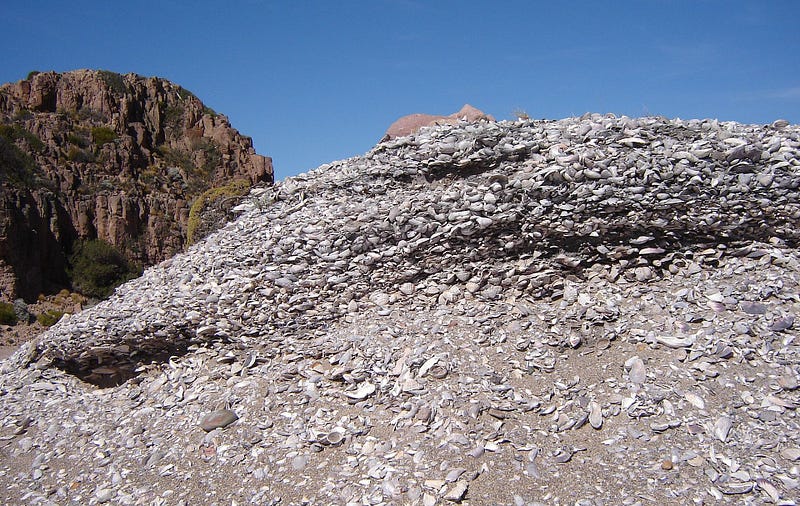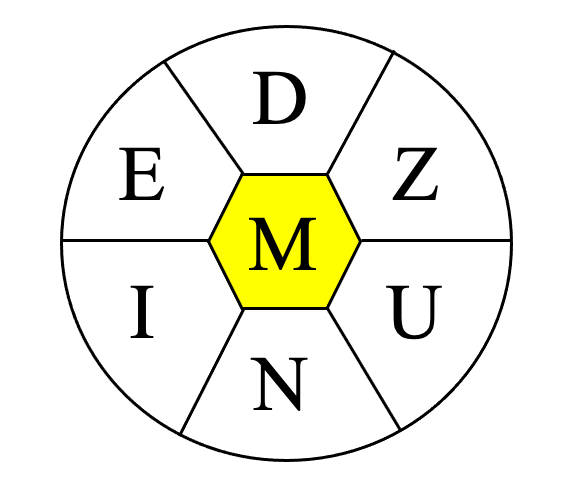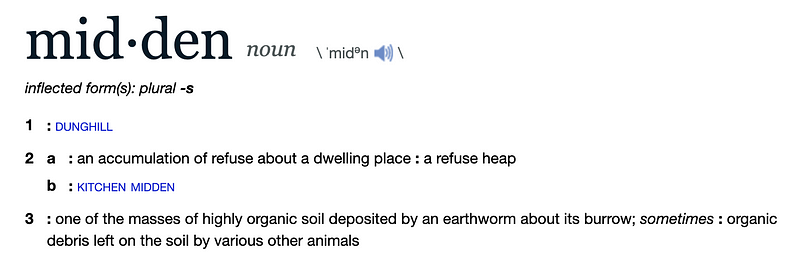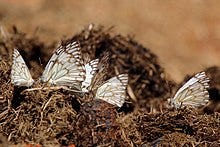Exploring the Fascinating World of Middens and Language
Written on
Chapter 1: The Curious Case of the Word "Midden"
Today's topic dives into an unexpected heap of discussions!

Photo by Mikel Zubimendi
Today's New York Times Spelling Bee letters include:

Art: Iva Reztok
The letters are D, E, I, N, U, Z, with M at the center (all entries must incorporate M). According to Merriam-Webster...

Credit: merriam-webster.com
Oh, the irony! It seems the dictionary overlooks the potential of "midden" as a valid term just because The New York Times says otherwise.
For additional engaging information, take a look at the Spelling Bee Master. What’s your favorite term from today’s puzzle?
My Thoughts
Crap, soil, dung, excrement, feces, waste, and midden are all synonyms for poop. Clearly, today’s topic is going to have quite a pungent aroma. Continue reading… if you’re brave enough!
Section 1.1: Linguistic Roots of "Midden"
Merriam-Webster informs us that the word "midden" originates from Middle English "midding," with Scandinavian roots, akin to the Danish "mødding" meaning "dunghill," from "mög" (dung) and "dynge" (heap), linked to Old Norse "myki" (dung) and "dyngja" (manure pile).
Before diving into the manure aspect, let’s explore non-fecal middens. According to Wikipedia, a midden (or kitchen midden) is an ancient refuse pile that may contain remnants like animal bones, human waste, plant materials, mollusc shells, and artifacts related to past human habitation. These sites serve as valuable resources for archaeologists investigating the dietary and cultural habits of earlier societies. In damp, low-oxygen conditions, organic materials can be preserved, allowing insights into daily life through the various deposits.
Some middens, particularly shell middens along coastlines, consist mainly of mollusc shells, reflecting the waste from meals enjoyed by nomadic groups over centuries. While some are small and linked to individual meals, others stretch for meters, representing extensive periods of shell accumulation.
Here's a photo of the Turtle Mound shell midden in Florida, the largest on the East Coast, captured in a black-and-white style for a more artistic effect.

Credit: State of Florida, Florida Park Service
Section 1.2: The Science Behind Dung Heaps
The dictionary defines "dunghill" as synonymous with "midden," offering a rather uninspired description: “a heap of dung.” Ben Payne elaborates that it’s a “pile of droppings that increases through regular additions and serves as a territorial marker associated with scent.”
Curiously, who is Ben Payne? My search revealed a marathon runner, a painter, and a hockey player, but none appeared to specialize in dung analysis. It’s Saturday night, and my energy is limited.
Various mammals, such as antelopes, hyraxes, and rhinoceroses, create these dung heaps, which others use for food and mating cues. The infamous dung beetle is particularly fond of these waste piles.
Some species maintain a lifelong association with dung middens. Notably, rhinos produce significant midden volumes, with some measuring up to 65 feet in diameter.

Photo by JTeessen
Interestingly, butterflies often pose for photos atop these rhino dumps:

Photo by Charles J. Sharp
White rhino middens are typically black and grass-based, while black rhino middens appear brownish, containing more twigs and branches, revealing their specific dietary preferences. It seems there are even specialists dedicated to analyzing rhino dung—who knew?
Now you’re equipped with knowledge! The next time you stumble upon a large refuse pile in the woods, impress your friends by identifying it as a midden. They may be puzzled, though, as the Spelling Bee editors decided that "midden" is merely a ghost word.
For a deeper dive into another ghost word, check out my previous entry on "dord."
The Enigma of 'Dord': A Lexicographical Mystery
One common query posed to lexicographers is whether it’s possible to sneak terms into the dictionary. Can you…
www.merriam-webster.com
In this video, learn more about what a midden is and its significance in archaeology.